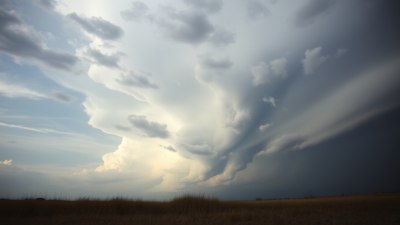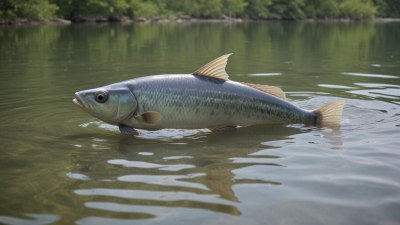Why Sidewalk Cafés Are Really Just Wind Tunnels With Snacks
Explore the intriguing dynamics of sidewalk cafés and their unexpected challenges, including wind tunnels and food experiences.

This image was created with the assistance of Freepik
Sidewalk cafés are a quintessential part of urban life, providing not just sustenance but a space for socializing and people-watching. However, beneath the charming exterior lies a deeper reality that often goes unacknowledged—the winds that sweep through these dining areas, fundamentally altering the experience for patrons. This article delves into the reasons why sidewalk cafés often resemble wind tunnels disguised as delightful eateries.
Sidewalk Cafés
The concept of sidewalk cafés has been celebrated worldwide. They create a vibrant atmosphere, offer a unique dining experience, and invite passersby to indulge in culinary delights while observing city life. Tourists and locals alike flock to these spots for their open-air charm. Yet, this appeal can often be overshadowed by environmental factors, particularly wind.
The Urban Wind Phenomenon
In urban areas, buildings create what is known as the 'urban canyon effect.' This phenomenon occurs when tall structures line either side of a street, funneling strong breezes down into the narrower spaces between them. These winds can be brisk and chilling, making even the sunniest day feel less inviting. For sidewalk cafés, this means that diners can experience unexpected gusts while trying to enjoy their meals. Gone is the peaceful ambiance; instead, patrons might find themselves shielding their plates from sudden blasts of wind.
Structural Design and Accessibility
The design of the café itself often plays a crucial role in how wind interacts with the space. Many cafés opt for a simple arrangement of patio furniture positioned along sidewalks, with minimal barriers to protect against the elements. While this open format appeals to patrons seeking an unobstructed view, it lacks the necessary structural integrity to guard against wind interference effectively. Designers sometimes consider aesthetic appeal over functional utility, leading to potential discomfort for guests.
Weather Challenges and Solutions
Wind is just one of many weather-related challenges sidewalk cafés face. Rain, snow, and temperatures can also affect outdoor dining experiences. As a response to these challenges, many cafés have implemented solutions such as retractable awnings, windbreaks, and patio heaters. However, such modifications can only do so much. When weather conditions are at their worst, customers often avoid outdoor seating altogether, experiencing decreased foot traffic, which can significantly impact the café's bottom line.
Menu Adjustments for Windy Conditions
Wind can also influence the type of food and drink offerings at sidewalk cafés. Spilled drinks or food blown off tables become common occurrences in breezy conditions, prompting cafés to adapt their menus accordingly. Heavier glassware, more substantial plates, and weighted napkin holders can help minimize mess during strong gusts. Additionally, cafés may favor items less likely to be affected by the wind. For instance, they might avoid delicate pastries and instead serve heartier meals that can withstand a little turbulence.
Case Studies: Cities with Windy Sidewalks
Several cities are notorious for challenging sidewalk café atmospheres due to wind. New York City, with its skyscraper-lined streets, experiences significant wind currents. Sidewalk cafés in famous neighborhoods like SoHo often face trials when it comes to outdoor dining. A minor miscalculation regarding table placement can result in one table being comfortable while another is nearly uninhabitable due to gusts. Similarly, Chicago, known as the Windy City, presents its sidewalk cafés' challenges as well. Creative solutions employed in these environments, such as using large planters or wind barriers, can vary widely from one establishment to another, leading to varied dining experiences across the city.
The Psychological Impact of Wind
Psychology plays a significant role in how diners perceive their experience at sidewalk cafés. Unpleasant wind can cause discomfort beyond the physical realm; it may alter the overall mood of patrons, making them less inclined to enjoy their meals. The very act of eating in an outdoor setting can turn stressful. Wind gusts can feel invasive, leading people to rush through meals to escape discomfort. This anxiety can enhance the perception of the café space as a wind tunnel rather than a relaxing destination.
Adapting to the Wind: Strategies for Success
Those who operate sidewalk cafés must think critically about their outdoor strategies. Providing cozy blankets, offering windbreaks, or strategically placing furniture can contribute positively to the dining experience. Layout adjustments are essential; placing tables in areas that receive less wind or utilizing strategic landscaping can enhance comfort. Café owners can work together with city planning authorities to design more favorable outdoor dining experiences and ensure patrons can fully appreciate the atmosphere without the disruptive effects of wind.
Embracing the Wind
Despite the often-challenging conditions, sidewalk cafés are an integral part of the urban fabric. They provide culinary delights infused with the city's essence, and their allure unmistakably draws people in. Understanding the dynamics of wind and its impact on outdoor dining allows café owners to adapt their practices to improve customer experiences. While it may seem like these establishments are battling the elements every day, the vibrant energy and community connection they foster can make any discomfort worthwhile. The next time you sit at a sidewalk café, take a moment to appreciate not just the meal and ambiance but also the unique challenges that contribute to that experience—a delightful mix of culinary delight amid the whims of nature.











